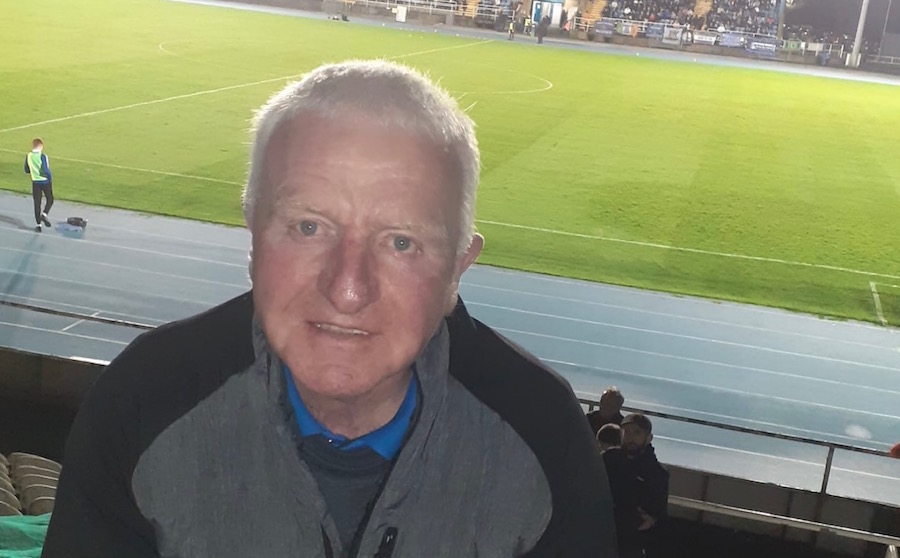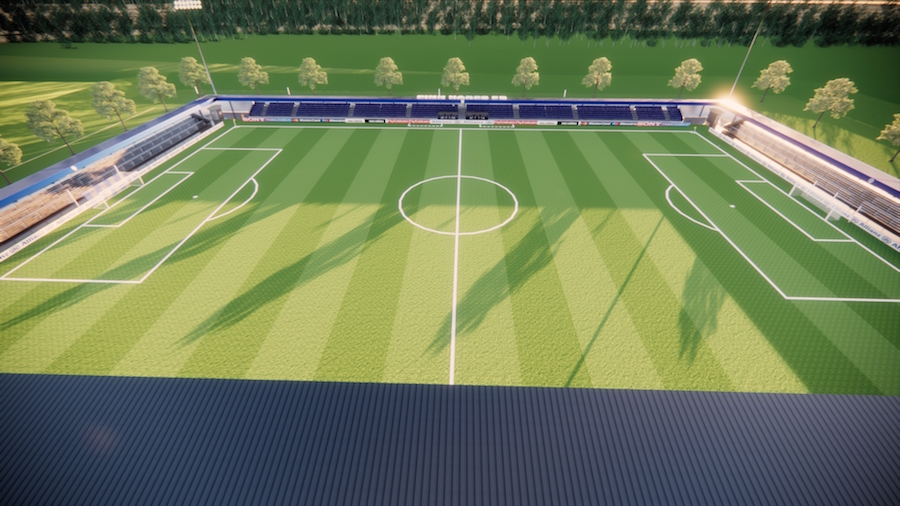Finn Harps are to move into their new stadium in 2024.
A statement was issued this evening by the club which revealed the full revised plans for the Donegal Community Stadium in the Twin Towns.
The club is set to announce plans for the revised stadium with a capacity of 6,130 with all areas covered.
This includes 2,800 standing on covered terracing (1,400 behind each goal) with 3,300 seated along both sidelines which comprises of 1,930 on West Stand (current structure) and 1,400 on the East Stand.
Paul McLoone, who has been the instrumental driving force behind the new stadium, has rejoined the project in an effort to finish the ambitious plan.
He volunteered to take the project to the next step which has resulted in significant progress as the club now plans to start construction in late summer/early autumn.
The new-look stadium is expected to come in at a total cost of €8M compared to a previous estimated cost of €11.5M.
McLoone said “The stadium project group have put in a lot of work over the past four months to the extent that we are now very hopeful that the Department of Sport will approve the recommencement of work in the near future.
“It is not over the line yet but we are optimistic that we can at long last deliver a stadium that is modern, accessible, atmospheric and that all of the County can be proud of.”
 The Club’s statement outlines how it has come up with a revised plan for the new stadium with hopes high for an alternative build.
The Club’s statement outlines how it has come up with a revised plan for the new stadium with hopes high for an alternative build.
“Supporters will have seen last week that the Dalymount Park project in Dublin had to be revisited as prices for building works have rapidly risen with regard to their original plans. We also faced this dilemma as we noticed last year that inflation in the construction industry was going to be a major problem for us.
“As a result, our stadium sub group looked at other options for construction with bottom line budgets and the desire to deliver a complete modern stadium being the determining factors. We looked at stadia in Ireland, Europe and the UK which used steel structures as the main component of the build.
“We opened discussions with the Dept of Sport, Donegal Co. Council and the FAI and because of this proactive approach we are now at a very advanced stage with regard to receiving approval for an alternative build. The stadium we propose will have a capacity of 6,130 totally covered.
“There will be 2,800 standing on covered terracing (1,400 behind each goal) with 3,300 seated along both sidelines which comprises of 1,930 on West Stand (current structure) and 1,400 on the East Stand. Since January of this year we have gone directly to the market place to ascertain up to date costs and we are in direct discussions with a number of suppliers about building the different elements of the Stadium.
“It will take approximately 9 months to construct and when we lay the pitch it will take 10 months to mature. We have not got a definitive start date as yet but we must lay the pitch at the latest in September 2023 which means all building will have to be complete by that date.
The economic benefit and profile that this stadium can bring to Donegal should not be underestimated.
“UEFA runs a plethora of international competitions at underage level for both girls and boys many of them run in group stages and usually held in the regions. Ourselves, Derry and Sligo could easily host these matches and as you could imagine most teams, families and supporters would want to stay in Donegal as we have the bed capacity and an extremely strong tourism offering.
“In addition, the FAI has promised us a number of Internationals at underage level and, as all games I refer to will be shown on TV across Europe, it will give great exposure to the Donegal brand. The stadium will be made available also for international competition for third level institutions, regional European junior matches and we will compete for other international tournaments when the opportunity arises.
“We have been talking to the FAI about putting the North West forward as the primary regional location in Ireland for hosting such events so the trick now is to ensure Donegal is at the centre of the action.
However, the primary aim is to have a stadium for the young people of Donegal and it is our hope that local clubs will have the opportunity to play there whenever the pitch is free and available.
“As we develop the game for ladies and girl’s football it is of the utmost importance that we have proper facilities of the highest standard. The Donegal Community Stadium will become the new home of Finn Harps and it is brilliant that the County has a team at senior level in the League of Ireland and this will become even more important as we move forward. Finn Harps ladies senior team will also play there and the club has ambitious plans to have three further pitches in the Twin Town’s area.”
Paul McLoone is extremely keen for the project to start as soon as possible and sees it as a showcase economic driver for Donegal.
“Finn Harps will be the main driver for the construction of the stadium and without doubt face a huge challenge but there is a dynamic new Board in place who I know are extremely keen to get diggers back on site.
“There is already €1m spent on this project with the next phase costing €5.5m which includes the construction of the stadium, erecting floodlights and laying the pitch. I’d safely say another €1.5m will be needed following that to fully complete the project which includes toilet blocks, hard surfaces, landscaping etc.
“This will bring the total cost to circa €8m which is no mean feat as the projected cost 15 months ago from the original plans was €11.5m. A lot of work done but a huge task lies ahead.
“The Club will be embarking on major fundraising efforts in the near future and I would implore everyone in the County and beyond to support their initiatives when announced.
“It is extremely important that this project is completed as it has gone on much too long. The stadium can be used for various sports or as a concert venue and has the capacity to be a huge economic driver for the County. We need to build a state of the art stadium that shows what we are about as a people and showcases Donegal as a standard bearer for soccer on the island of Ireland.”






